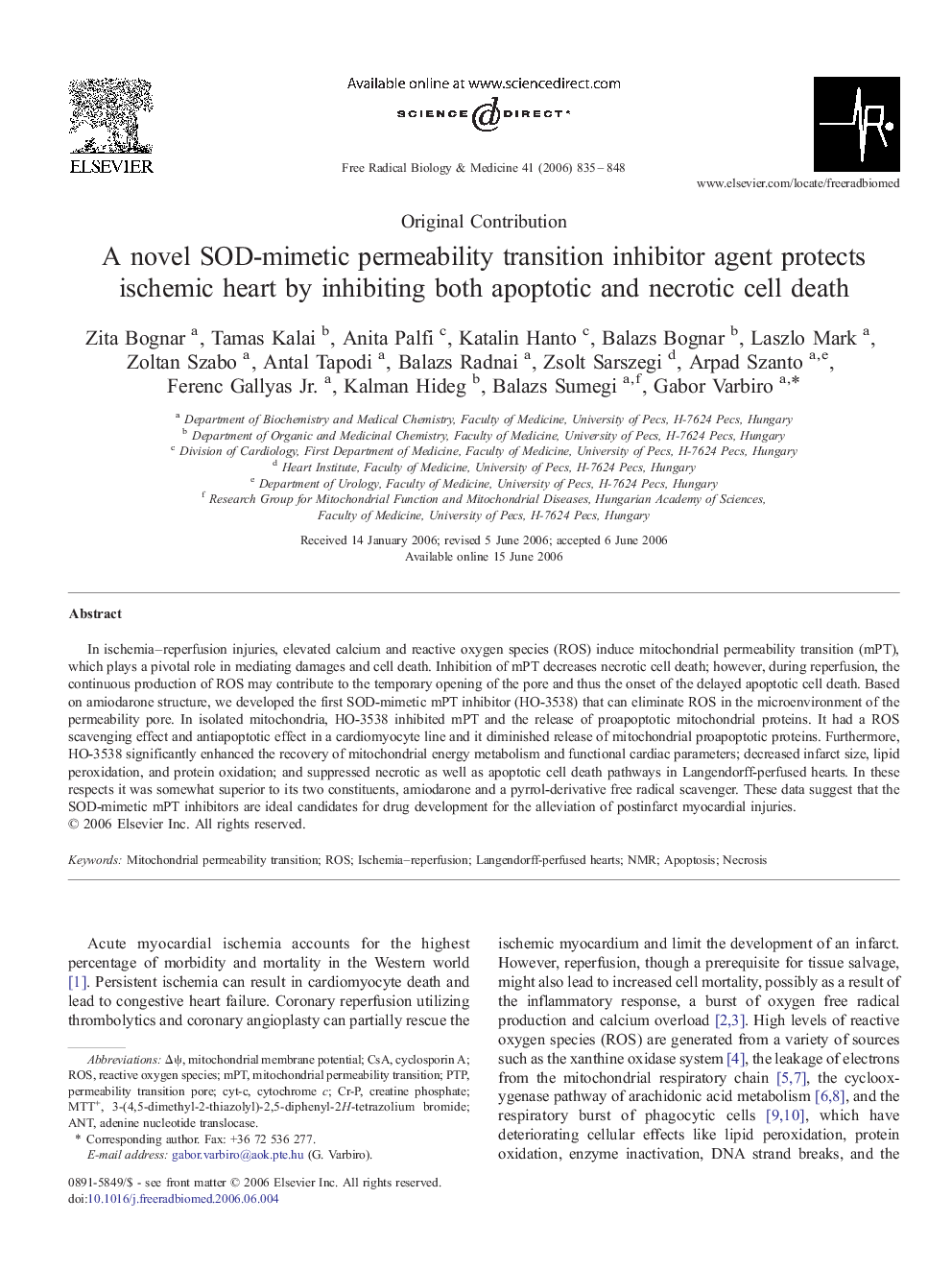| Article ID | Journal | Published Year | Pages | File Type |
|---|---|---|---|---|
| 1912049 | Free Radical Biology and Medicine | 2006 | 14 Pages |
Abstract
In ischemia-reperfusion injuries, elevated calcium and reactive oxygen species (ROS) induce mitochondrial permeability transition (mPT), which plays a pivotal role in mediating damages and cell death. Inhibition of mPT decreases necrotic cell death; however, during reperfusion, the continuous production of ROS may contribute to the temporary opening of the pore and thus the onset of the delayed apoptotic cell death. Based on amiodarone structure, we developed the first SOD-mimetic mPT inhibitor (HO-3538) that can eliminate ROS in the microenvironment of the permeability pore. In isolated mitochondria, HO-3538 inhibited mPT and the release of proapoptotic mitochondrial proteins. It had a ROS scavenging effect and antiapoptotic effect in a cardiomyocyte line and it diminished release of mitochondrial proapoptotic proteins. Furthermore, HO-3538 significantly enhanced the recovery of mitochondrial energy metabolism and functional cardiac parameters; decreased infarct size, lipid peroxidation, and protein oxidation; and suppressed necrotic as well as apoptotic cell death pathways in Langendorff-perfused hearts. In these respects it was somewhat superior to its two constituents, amiodarone and a pyrrol-derivative free radical scavenger. These data suggest that the SOD-mimetic mPT inhibitors are ideal candidates for drug development for the alleviation of postinfarct myocardial injuries.
Keywords
ANTPTPcyt-cMPT3-(4,5-dimethyl-2-thiazolyl)-2,5-diphenyl-2H-tetrazolium bromideROSPermeability transition poremitochondrial permeability transitionCSAischemia–reperfusionadenine nucleotide translocaseNMRApoptosiscytochrome ccyclosporin ANecrosisMitochondrial membrane potentialcreatine phosphateReactive oxygen species
Related Topics
Life Sciences
Biochemistry, Genetics and Molecular Biology
Ageing
Authors
Zita Bognar, Tamas Kalai, Anita Palfi, Katalin Hanto, Balazs Bognar, Laszlo Mark, Zoltan Szabo, Antal Tapodi, Balazs Radnai, Zsolt Sarszegi, Arpad Szanto, Ferenc Jr., Kalman Hideg, Balazs Sumegi, Gabor Varbiro,
